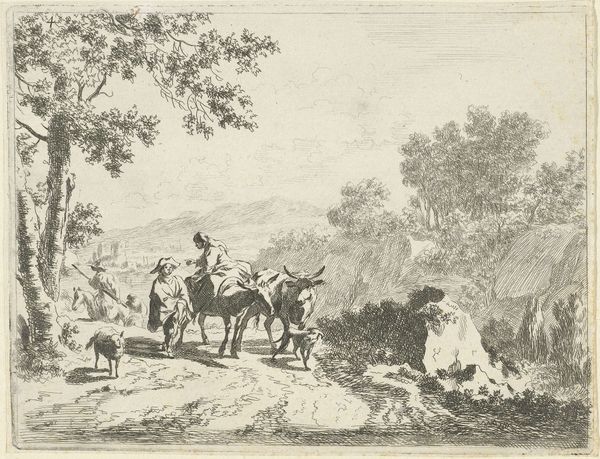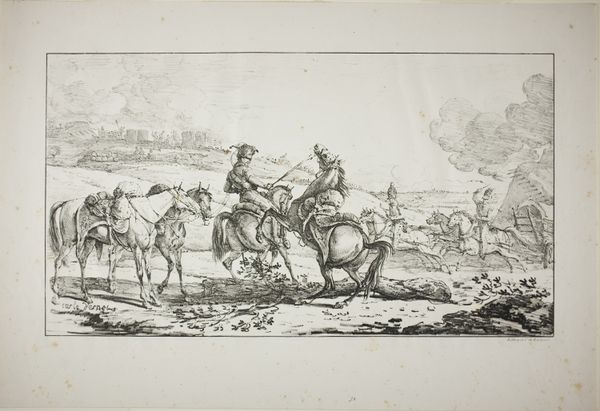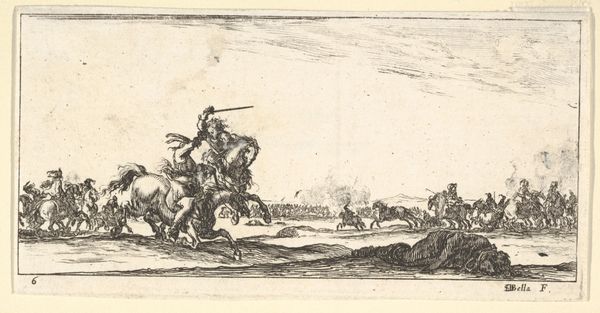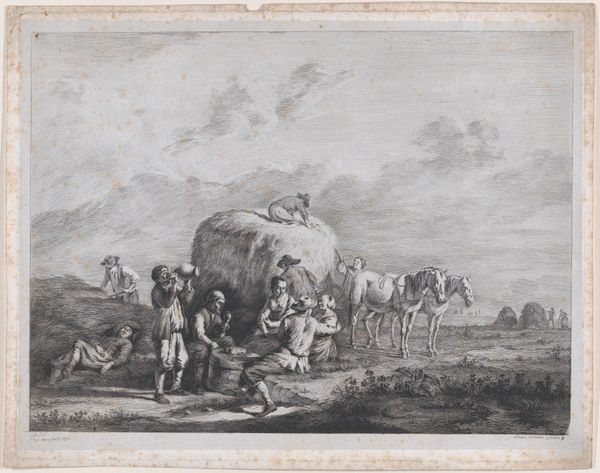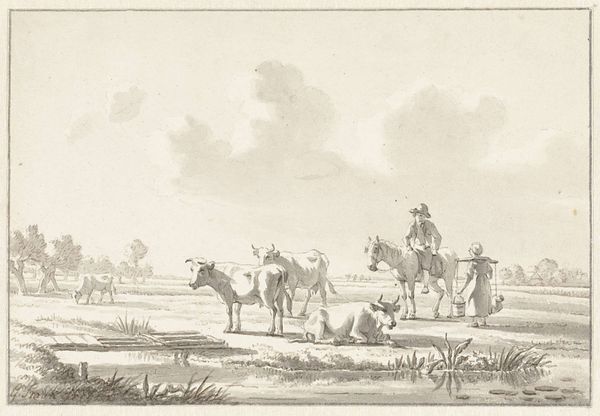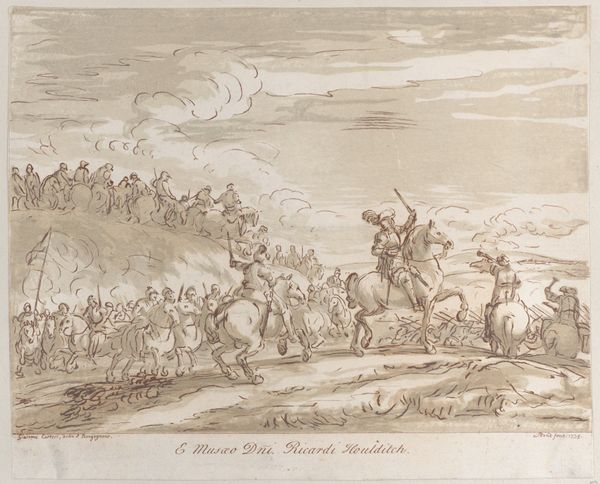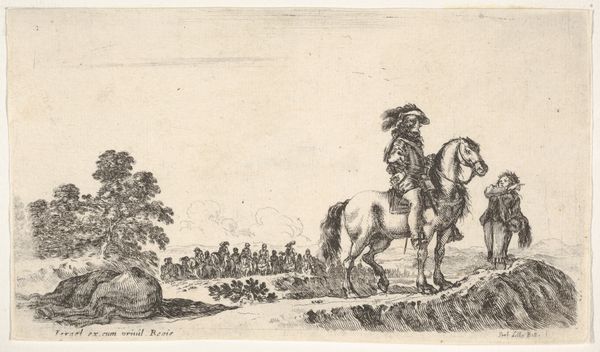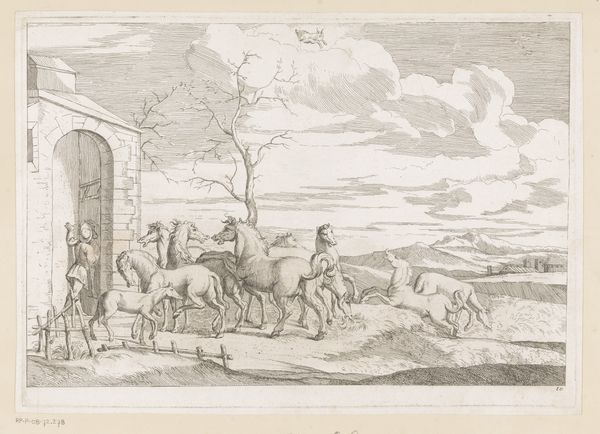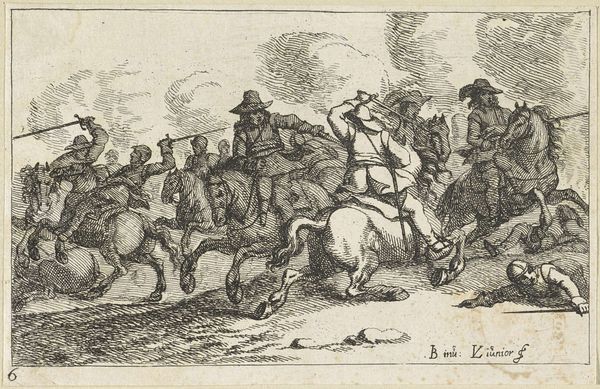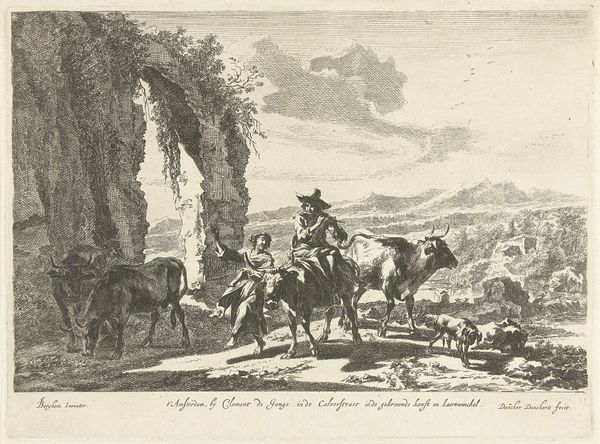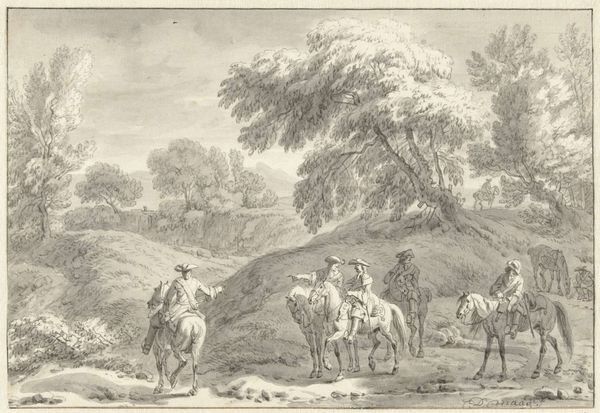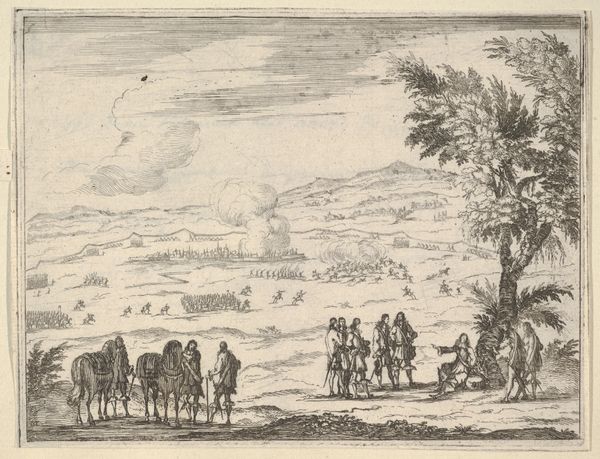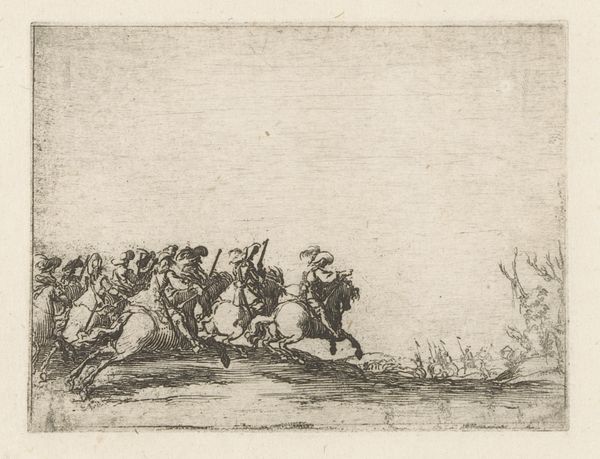
Plate 4: a procession of cannons and horses riding uphill towards the left, a dog at lower left, from Dessins de quelques conduites de troupes 1635 - 1645
0:00
0:00
drawing, print, etching, engraving
#
drawing
#
pen drawing
# print
#
etching
#
dog
#
landscape
#
11_renaissance
#
soldier
#
horse
#
history-painting
#
engraving
Dimensions: Sheet: 2 3/8 x 4 15/16 in. (6.1 x 12.6 cm)
Copyright: Public Domain
Curator: This etching, attributed to Stefano della Bella and dating from around 1635 to 1645, is titled "Plate 4: a procession of cannons and horses riding uphill towards the left, a dog at lower left, from Dessins de quelques conduites de troupes." It resides in the collection of the Metropolitan Museum of Art. Editor: My initial reaction is to its somewhat melancholic, subdued tonality, achieved almost entirely through line work. Despite the clear military subject, there's a certain stillness or quietness to it. Curator: I find that linearity compelling; consider how Della Bella establishes depth solely through careful calibration of the engraved line and its density, creating spatial relationships almost mathematically. Semiotically, the uphill procession can be read as a symbolic struggle or ambition. Editor: The strain on the horses drawing the cannon becomes immediately visible; look at the precise musculature rendered through hatching. It points towards not just anatomical knowledge but a sharp awareness of the labor and materiality required to wage war. It's an interesting tension: the refinement of the etching juxtaposed with the brutish physicality it depicts. Curator: Indeed, the formal juxtaposition highlights a larger paradox inherent to conflict itself—the deployment of technological sophistication for often primal and destructive ends. Note too, the receding landscape: a sophisticated use of line to suggest atmospheric perspective. Editor: This leads to a fascinating consideration of audience: was Della Bella aestheticizing conflict, critiquing its human cost, or documenting the mechanics of its execution for an elite viewership? I suspect it’s the physicality—the dirt, the sweat, the weight—that offers the most direct window into the reality behind the military’s romantic veneer. Even the dog contributes a sort of earthbound authenticity. Curator: Its inclusion provides an unexpected contrast to the otherwise orchestrated march. Perhaps its function is to humanize, even domesticate, the scene within an easily digestible narrative. The artwork’s value isn't just as an artifact, but also in its complex network of visual strategies. Editor: Ultimately, engaging with this piece reveals a sophisticated negotiation of art and warfare. Its delicate lines trace not just the path of an army, but also of production, labor and society's acceptance of conflict as both brutal fact and aesthetic subject.
Comments
No comments
Be the first to comment and join the conversation on the ultimate creative platform.
